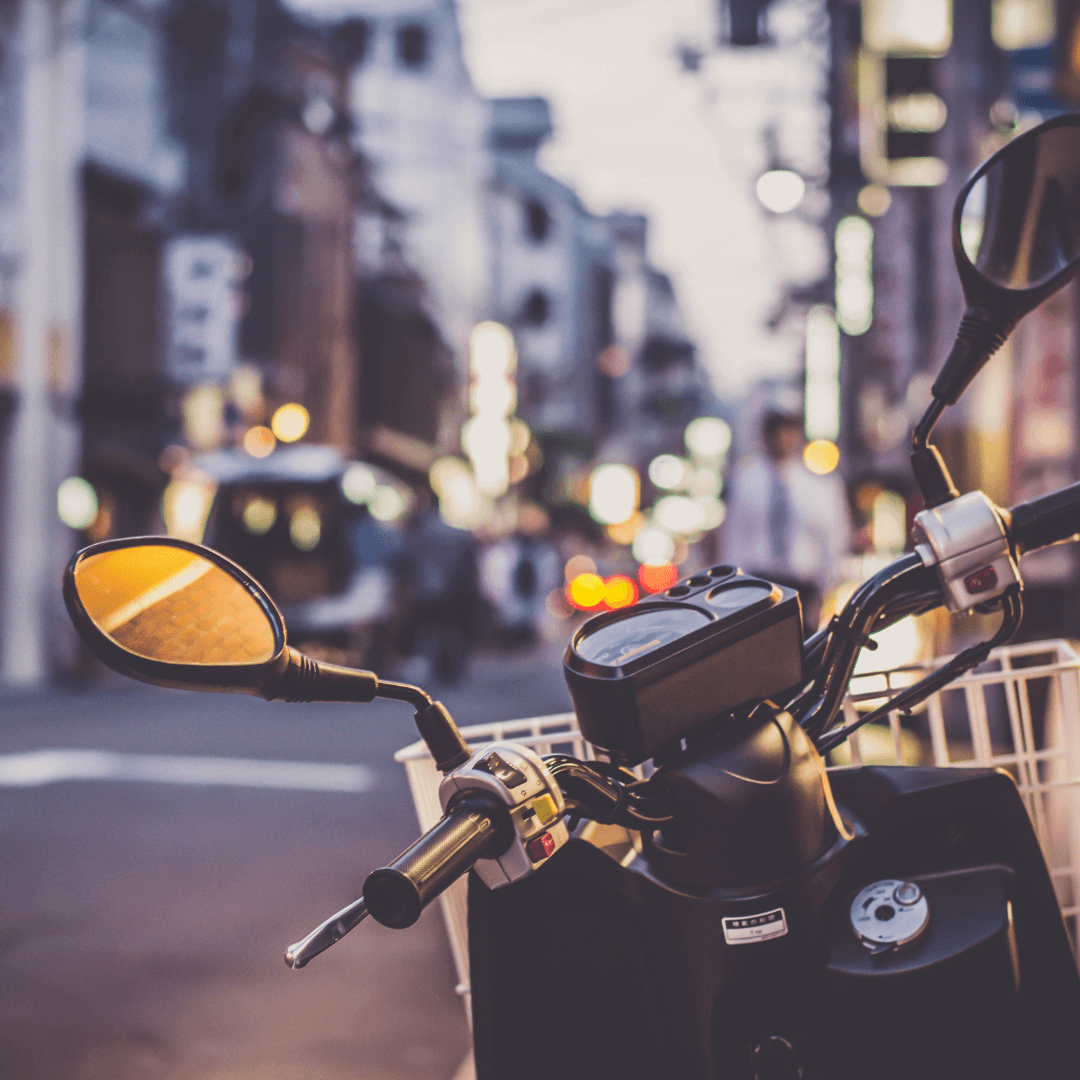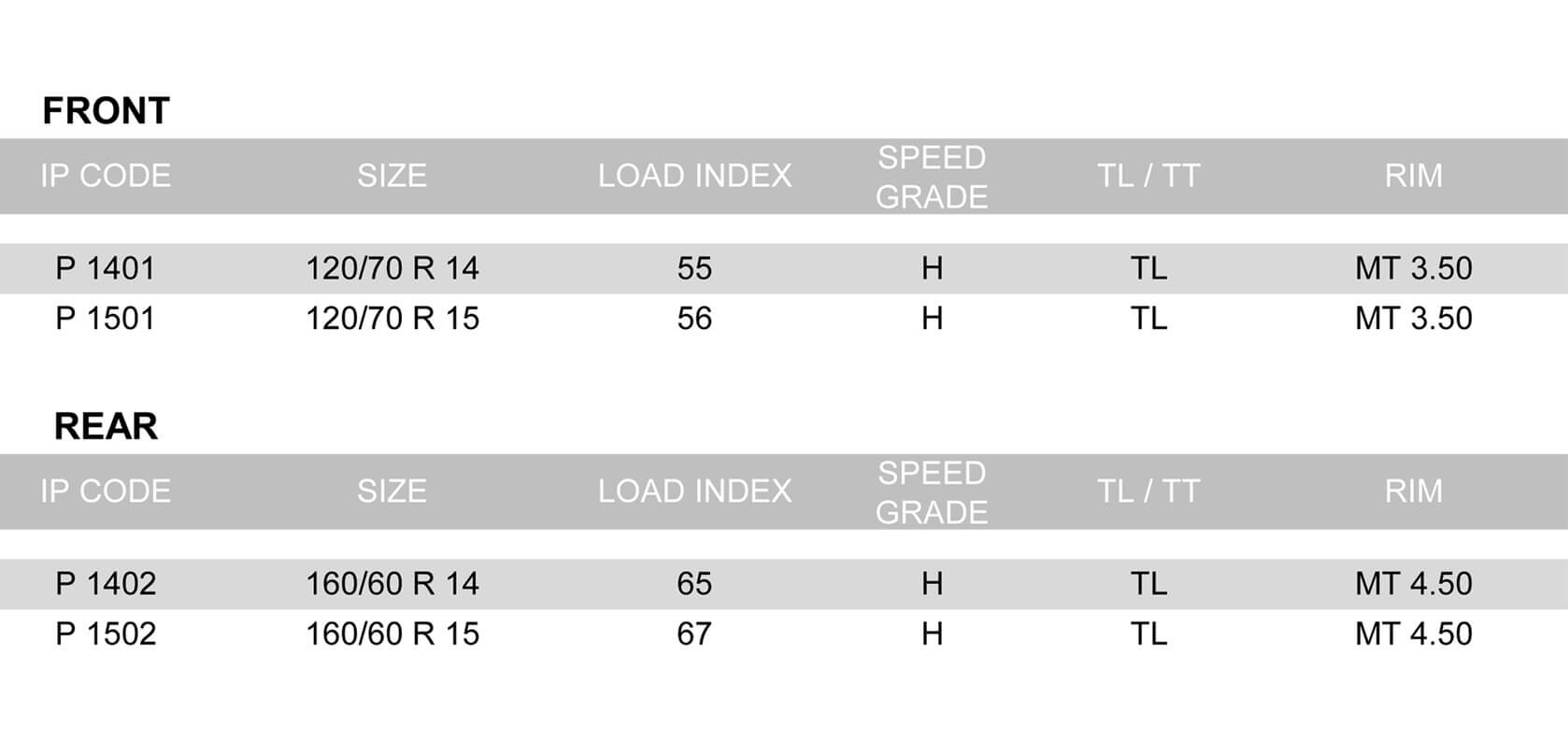Scooter tires engineered for control, comfort, and wet-road safety. Explore Kingtyre K95 scooter tyres and get the best daily urban performance.
| Pneus avant : | 120/70R14, 120/70R15 |
|---|---|
| Pneus arrière : | 160/60R14, 160/60R15 |

Kingtyre K95 scooter tires are engineered through a precision workflow that is, above all, optimized for city speed, braking stability, and wet-road safety. Consequently, the tread uses a directional chevron pattern with variable-width main grooves (6.0–7.2 mm), as well as micro-sipes across shoulder blocks. As a result, the contact patch remains stable under load while water is channeled away quickly.
Additionally, NVH tuning—balanced against tread block pitch—cuts pattern noise by 1.5–2.1 dB(A), which, as shown above, is noticeable during highway commutes. Similarly, shoulder tie-bars curb cupping, so wear looks more uniform after 8,000–10,000 km in mixed city/highway use (test riders: 65–95 kg; loads: 30–60% GVWR).
Pneus avant
Pneus arrière
Correspondingly, these sizes align with popular maxi-scooters and performance commuters; if you ride two-up, then select the 15-inch pairing for increased carcass stability.

By and large, Kingtyre’s motor scooter tires factory integrates a Ligne d'extrusion de bandes de roulement à quatre composants for precise silica dispersion; concurrently, a Presse de séchage hydraulique automatisée à haut tonnage ensures uniform vulcanization. Moreover, our Système de détection de l'équilibrage dynamique validates every K95 before shipping; therefore, out-of-round issues are minimized from the outset.
| Attribute | Spécifications |
|---|---|
| Construction | Radial, 0° belt + 1–2 ply casing |
| Compound System | Silica-rich cap / durable base (dual-phase) |
| Tread Depth (new) | 6.0–7.2 mm (size-dependent) |
| Speed/Load (typical) | Front W-rated (where applicable); Rear V/W-rated (market-dependent) |
| Recommended Cold Pressure* | Front 2.2–2.4 bar (32–35 psi); Rear 2.4–2.8 bar (35–41 psi) |
| Target Use | Daily commute, expressway touring, all-weather urban |
| Noise Control | Multi-pitch sequencing, shoulder tie-bars |
| Certifications | ECE/DOT (market dependent) |
Q1. How does K95 perform in heavy rain?
A. Due to silica and step-void channels, wet braking improves up to 7.8% in internal tests; nevertheless, ride within conditions.
Q2. What pressures should I run?
A. Generally 2.2–2.4 bar (front) and 2.4–2.8 bar (rear); however, check the placard—loads and ABS calibrations differ.
Q3. Is K95 suitable for cold mornings?
A. Yes; correspondingly, silica aids low-temp grip, though warm-up still takes a few kilometers.
Q4. Will the K95 reduce road noise?
A. By comparison to common patterns, NVH drops ~1.5–2.1 dB(A), as our pitch sequence is optimized.
Q5. What about high-speed stability with a passenger?
A. As long as pressures are correct, the radial belt controls growth and wobble at speed.
Q6. Can I tour on highways with luggage?
A. Certainly; with this in mind, increase rear pressure per the manual and inspect tread before departure.
Q7. Does the K95 resist punctures?
A. Reinforced carcass and thicker crown rubber help; even so, sharp debris can penetrate—consider sealant only if OEM-approved.
Q8. How long will they last?
A. All things considered, mixed city/highway riders report 8,000–12,000 km; riding style and alignment matter.
Q9. Do they work with ABS and TCS systems?
A. Evidently yes; profile design maintains consistent wheel speed feedback.
Q10. Are these tires tubeless?
A. Yes (TL); nonetheless, verify rim compatibility.